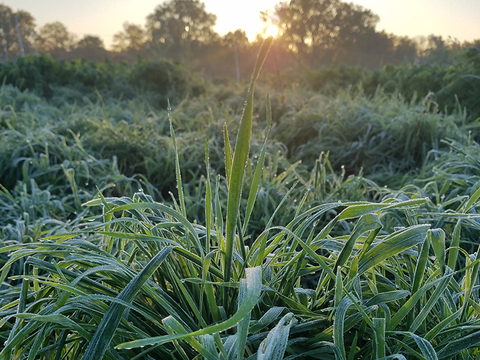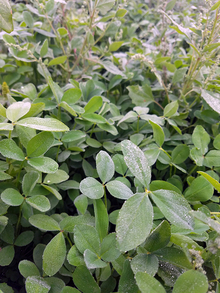Quick facts
- Cover crops can extend the grazing season in the fall.
- Cover crops are annual forages.
- Berseem clover doesn't produce much forage, but horses prefer it the most.
- Horses do not readily eat radish and turnip.
- Berseem clover, annual ryegrass, and winter rye are an ideal mixture for horse pastures.
Fall grazing for horses
Pastures in the Upper Midwest contain cool-season forages like white clover and Kentucky bluegrass. However, pastures may not produce enough forage to graze into the fall. Horse owners often must rely on costly, preserved forages like hay to feed their horses in the fall and winter.
Growing annual forages like cover crops can help offset the need for hay in the fall. When planted in August, cover crops can provide forage from September until a hard frost in November or December. Common cover crops include winter rye, annual ryegrass, berseem clover, daikon radish, and purple top turnip.
Using cover crops in horse pastures
Horses prefer berseem clover, winter rye, and annual ryegrass over turnip and radish. These forages can be useful for extending the grazing season for horses.
Because berseem clover produces little forage, you should plant it in a mixture with winter rye or annual ryegrass.
Planting turnips and radish in highly compacted areas with increased hoof traffic can help break up the soil. You could also use them to prepare a pasture for reseeding the following spring by improving soil health and out-competing weeds.
Testing cover crops in horse pastures
In September and October of 2018 and 2019, we grazed four horses on a mixture of cover crops:
- winter rye,
- annual ryegrass,
- berseem clover,
- daikon radish, and
- purple top turnip.
We seeded pastures each year in August.
Pastures produced more forage when grazed twice in 2019 compared to once in 2018.
- Berseem clover produced the least amount of forage.
- Radish and turnip produced the most forage.
- Radish and turnip roots produced more root growth as the season progressed and provided roots accessible to grazing in October.
- Radish and turnip out-competed weeds due to their large leaves.
- Berseem clover pastures contained the most weeds.
All cover crops provided enough energy to meet the needs of an adult, idle horse.
- Crude protein content varied both years for each cover crop.
- Radish and turnip tended to have the highest crude protein and lowest neutral detergent fiber content.
- Winter rye, annual ryegrass, and berseem clover were higher in nonstructural carbohydrates compared to radish and turnip tops.
- The roots of radish and turnip were highest in nonstructural carbohydrates and are not suitable for horses with metabolic concerns.
- All cover crops, except for winter rye and annual ryegrass, met the minimum 1:1 calcium to phosphorus ratio needed by the average adult horse. Horses grazing only these grasses will need a calcium supplement.
Horses had open access to cover crops in mixtures and in single-forage plots. We measured preference after each grazing rotation by visually estimating the percent of forage grazed to a 2-inch height on a scale from 0% (no grazing activity) to 100% (all available forage grazed).
- Most preferred: Berseem clover, winter rye, and annual ryegrass.
- Least preferred: Daikon radish and purple top turnip.
Prigge J. L., Sheaffer C. C., Jungers J. M., Jaqueth A. L., Lochner H. L., Martinson, K.L. Forage Characteristics and Grazing Preference of Cover Crops in Equine Pasture Systems. J Equine Vet Sci. 2021 Aug; 103:103663. doi: 10.1016/j.jevs.2021.103663.
Reviewed in 2022



